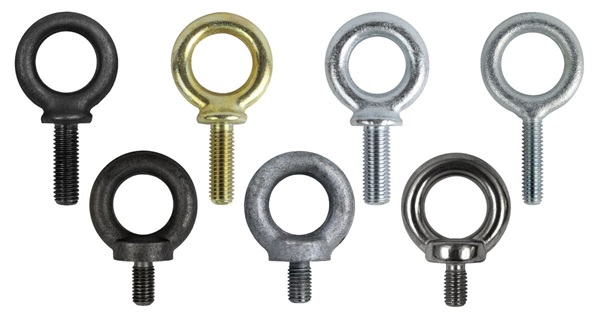Do you know the risks involved in lifting heavy weights? Are you aware of the common mistakes in heavy-duty tasks? Being mindful of errors can significantly improve safety in load-lifting operations.
A lifting eye bolt is crucial, but only when used correctly. Here, you will learn about common mistakes and how to avoid them. Understanding these safety measures ensures a smoother, safer operation lifting process.
Incorrect Sizing for the Load
Selecting the wrong size of a rigging bolt is a common mistake that leads to accidents. When a tool is too small for its weight, its capacity is exceeded, causing failure. Each is designed to handle a specific load, and overloading weakens the structure. Failing to size these tools correctly can result in equipment damage or even severe injuries during operations.
To avoid incorrect sizing, always verify the eye bolt’s weight capacity before use. Match its load rating with the weight of the item being lifted for safety. Follow load specifications strictly to ensure the tool can support the intended burden without strain. Proper sizing prevents accidents and ensures safe lifting operations in industrial environments.
Improper Installation Practices
Improper installation of these accessories often leads to accidents in heavy-duty operations. Many users mistakenly assume that partially threading the tool is enough to secure it. However, incomplete threading or loose installation can cause the bolt to pull out during lifting. This common error increases the risk of accidents, potentially harming workers or equipment.
To ensure proper installation, the load bolt must be fully threaded and securely seated. It must also be flush with the base material, distributing the weight evenly. Always double-check the installation before lifting heavy loads to reduce risks. Following proper installation procedures is essential for ensuring a safe and successful lifting operation.

Using Damaged or Worn Tools
A damaged or worn rigging bolt can severely compromise safety during lifting tasks. Even minor defects, like cracks or bends, can weaken its structure, leading to failure. This mistake is often overlooked but poses a significant risk of accidents. Regular wear and tear can cause these tools to break unexpectedly, endangering workers and equipment.
The key to preventing this mistake is regular inspection of each bolt before use. Replace any damaged or worn tools immediately to ensure safe lifting operations. Never use a bolt that shows signs of damage, even if the defect seems minor. Consistent maintenance ensures they remain reliable for heavy-duty tasks.
Failing to Ensure Correct Angles
Another common mistake when using these tools is lifting loads at incorrect angles. Eye bolts are strongest when lifted vertically, and pulling at an angle reduces strength. Improper angles can lead to breaking. This error often occurs when the weight is unevenly distributed.
Always lift loads with the rigging bolt in a straight, vertical position. Ensure it is appropriately aligned to distribute the weight evenly. To maintain safety, avoid lifting at angles greater than the bolt’s rated capacity. Correct angles reduce the risk of equipment failure.
Not Following Manufacturer’s Guidelines
Ignoring the manufacturer’s guidelines when using a load bolt is a critical mistake that can lead to accidents. Each has specific instructions regarding installation, load limits, and lifting angles. Failing to follow these instructions can cause improper use, increasing the risk of accidents. This mistake often fails to lift, potentially causing injury or equipment damage.
To ensure safety, always review and follow the manufacturer’s guidelines for each eye bolt. Adhere strictly to recommended weight limits, installation methods, and angle restrictions to prevent accidents. Guidelines are designed to maximize safety and the tool’s lifespan in industrial settings. Following these recommendations ensures a safe and efficient lifting process.
Ensuring quality lifting equipment is essential for safe and efficient heavy-weight operations. Purchase a lifting eye bolt from trusted suppliers to guarantee durability and reliability. Always prioritise safety guides to prevent accidents when handling heavy weight. Invest in high-quality tools and follow proper procedures to protect workers and equipment.









